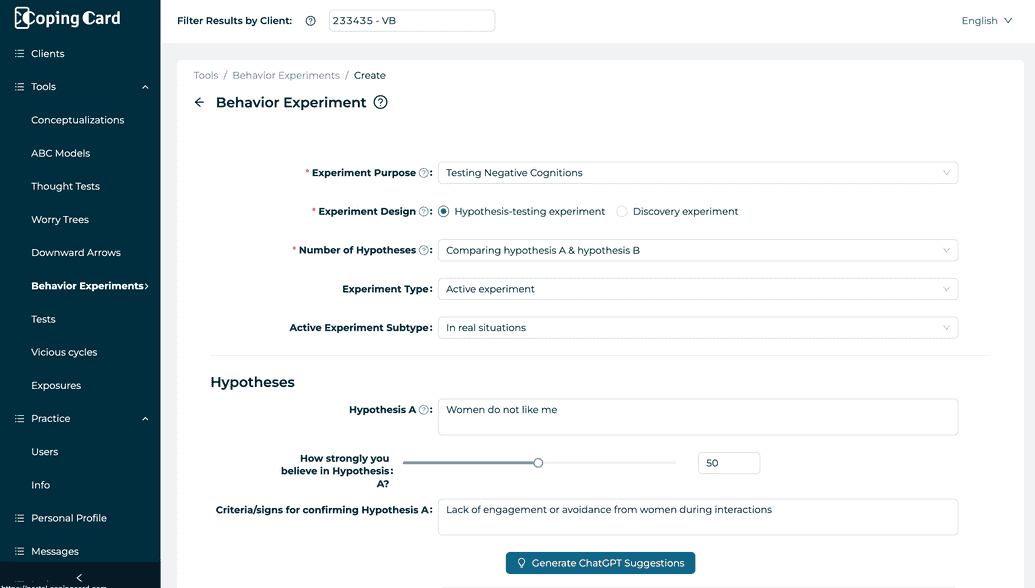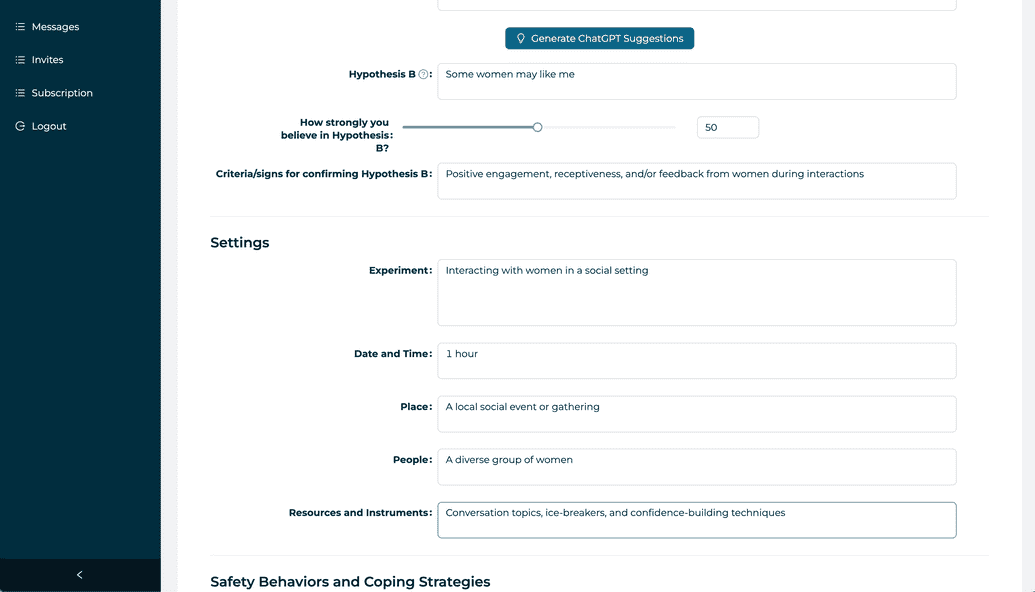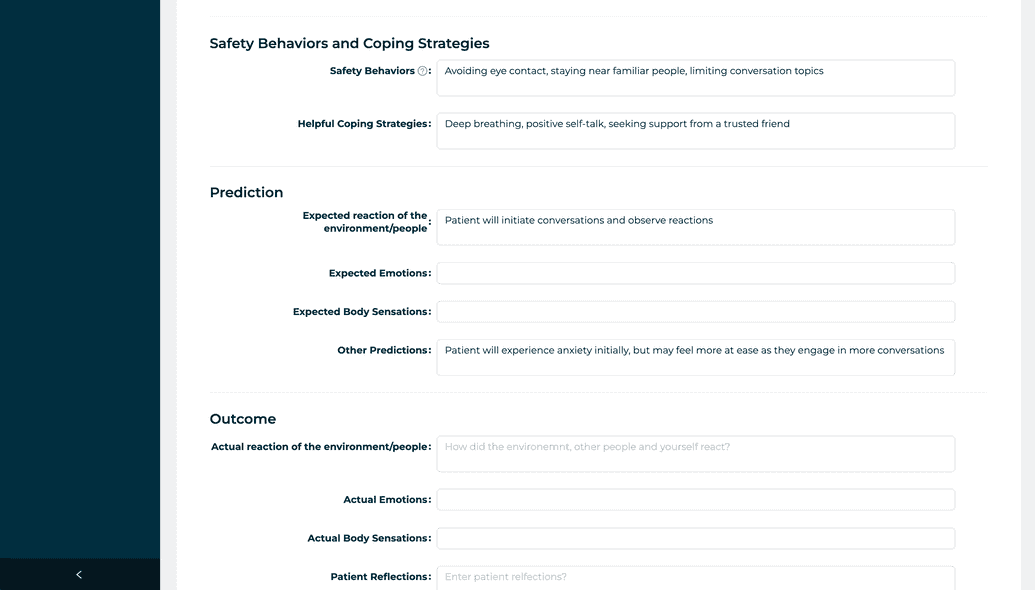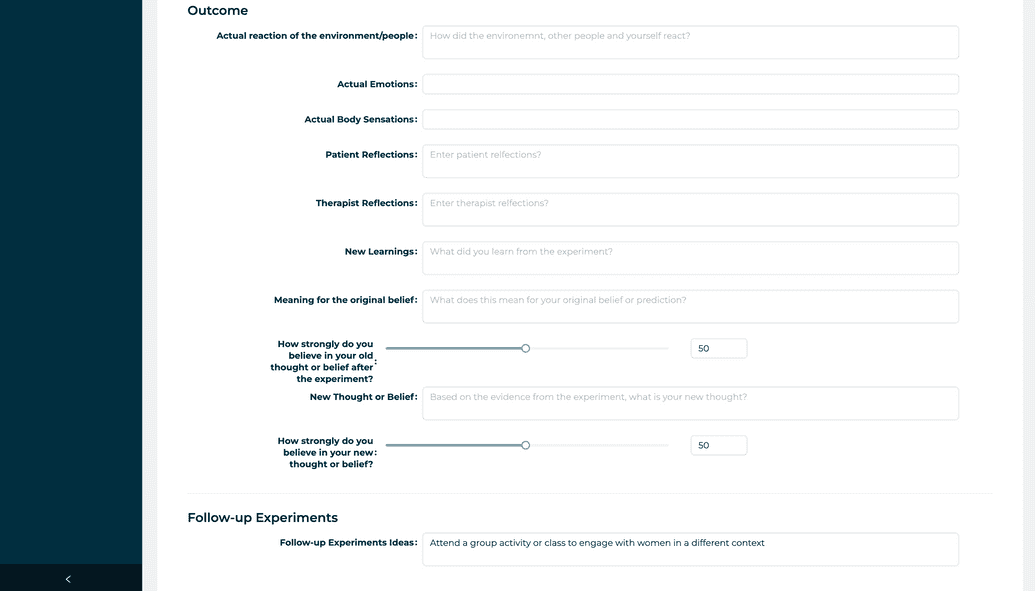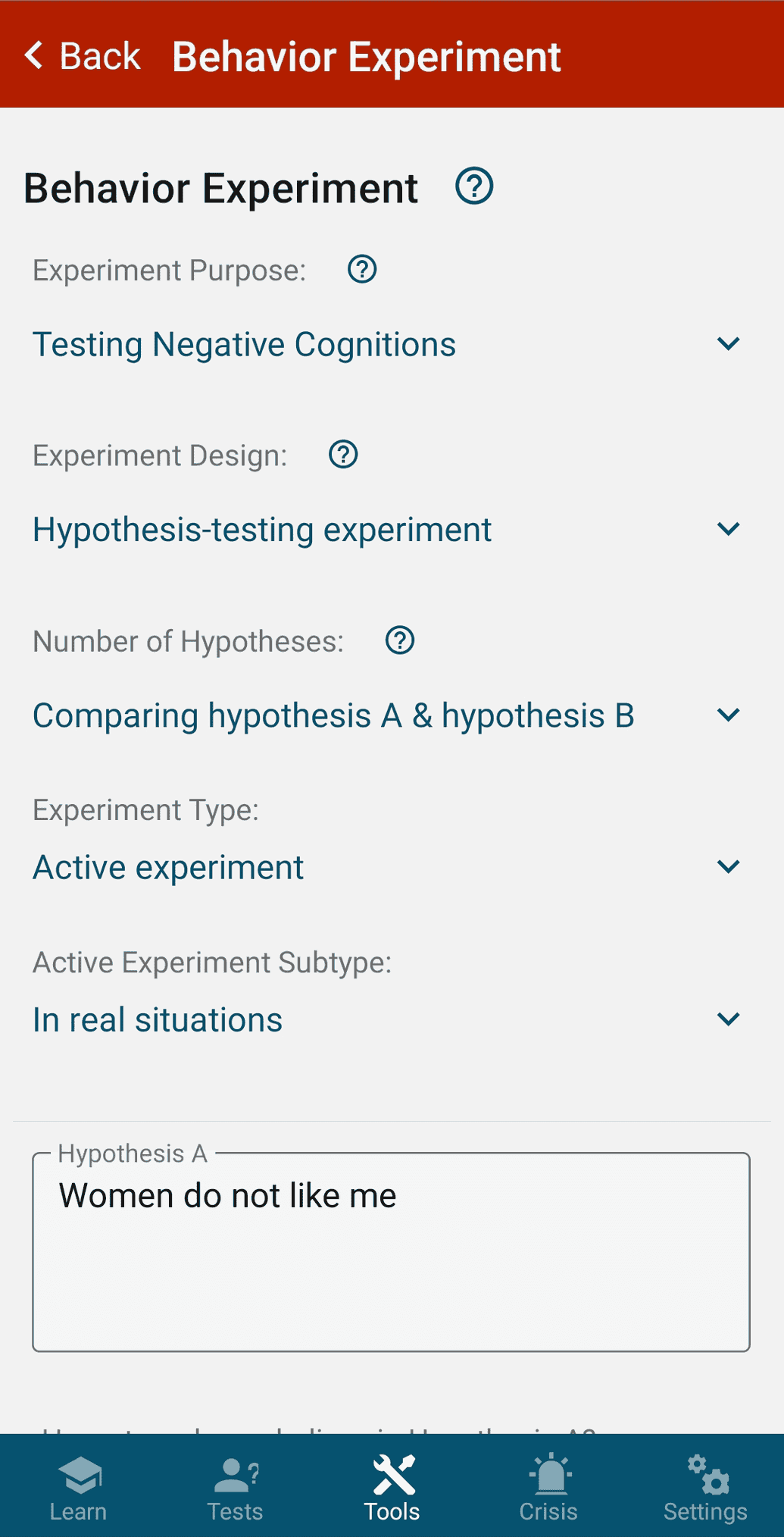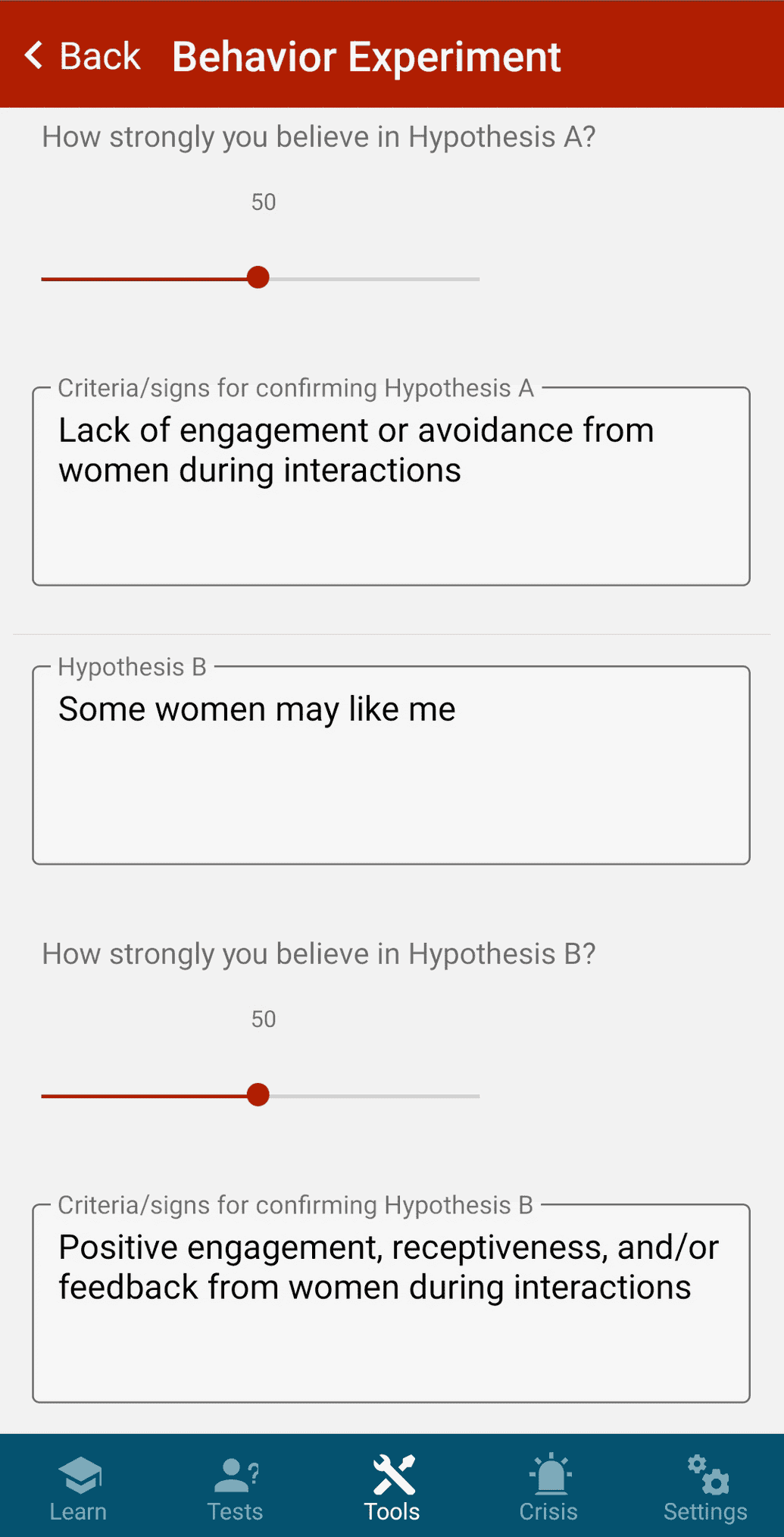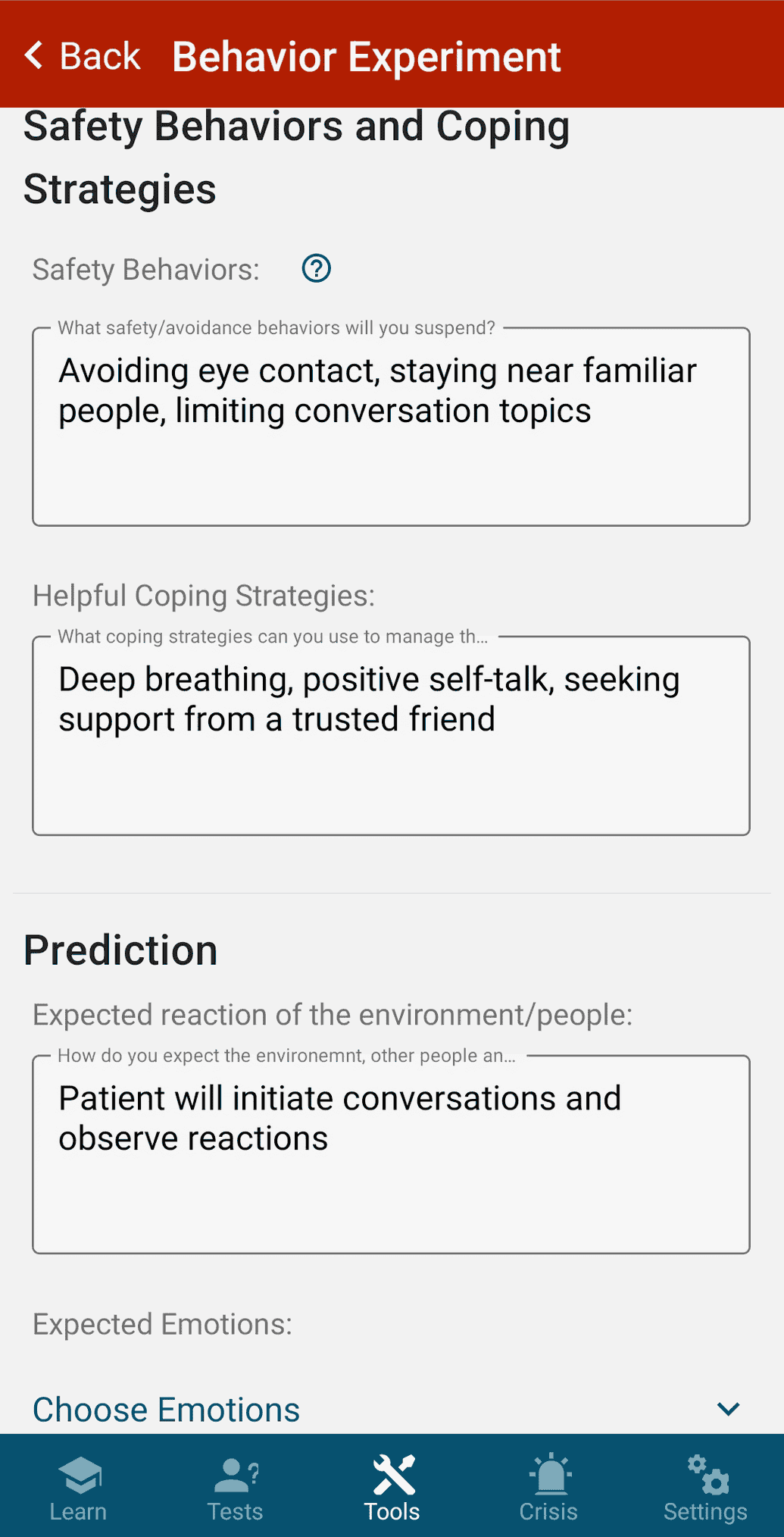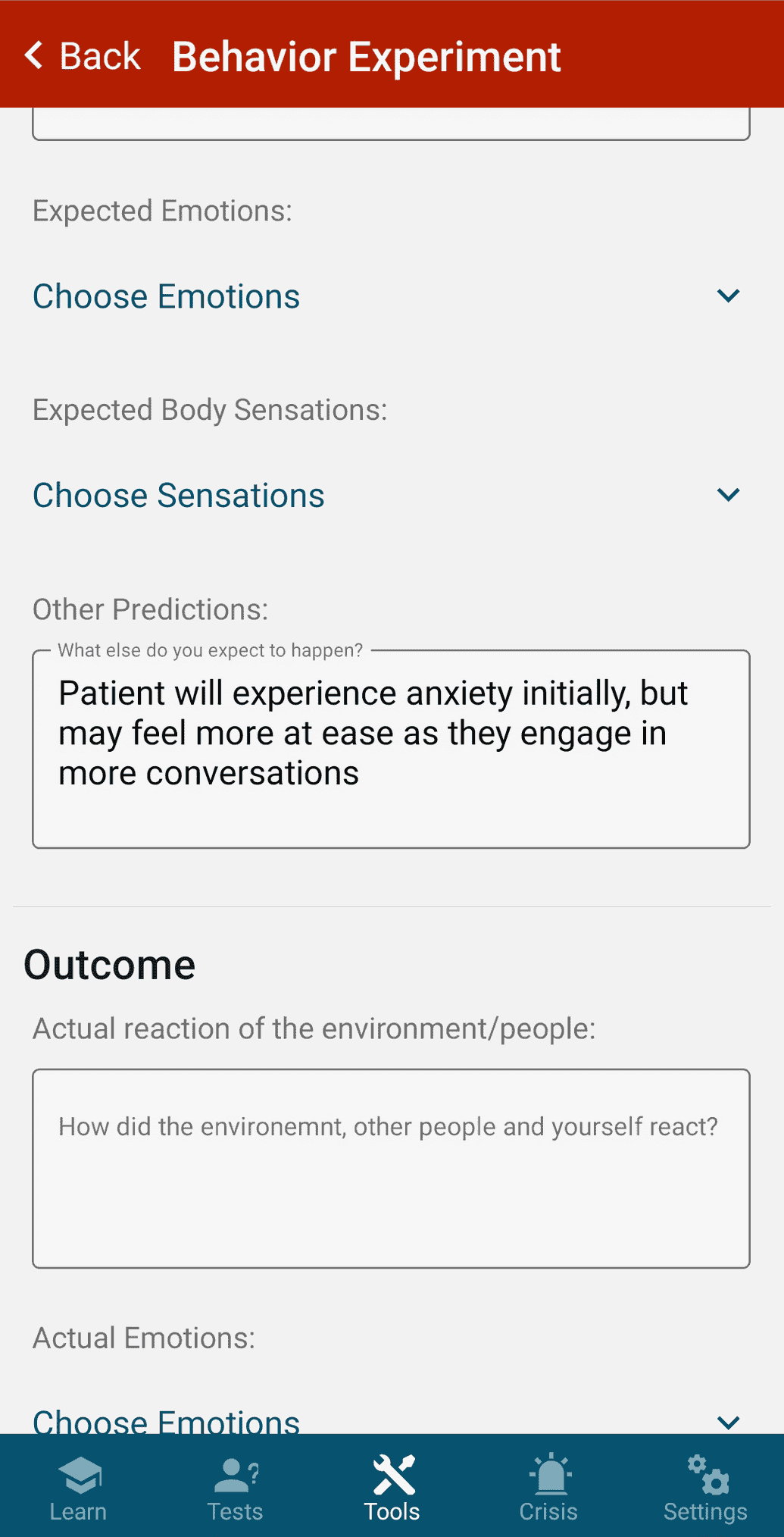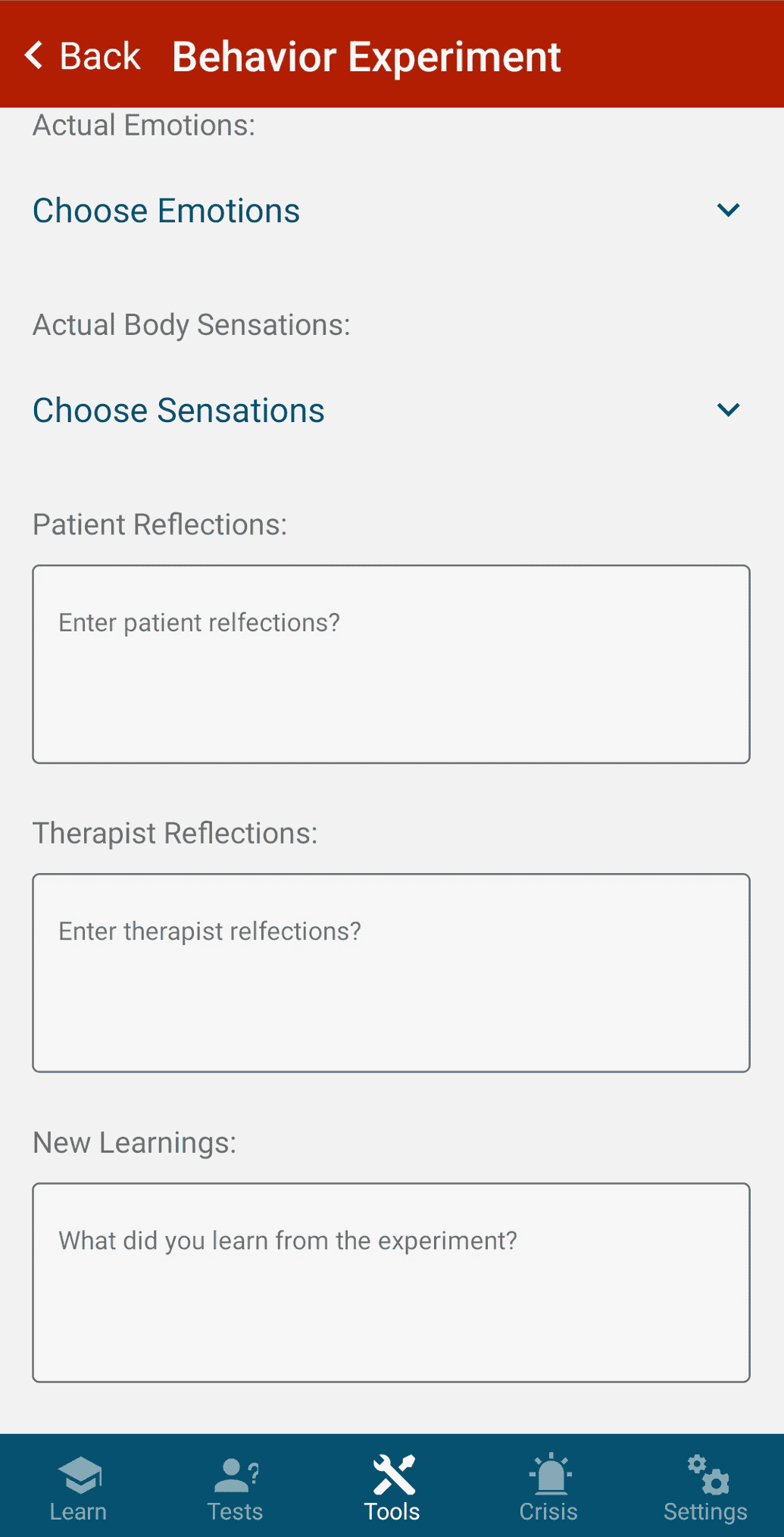Articles
General
Practice Management
Research Summaries
CBT Techniques: Behavioral Experiments
Behavioral experiments is one of the main and most effective methods of intervention in Cognitive behavioral therapy (CBT).
A behavioral experiment is a CBT technique for testing beliefs under realistic conditions. Behavioral experiments are commonly used in treatment of anxiety and affective disorders to test unrealistic predictions and the patient's assessment of situations or themselves in general.
We often make predictions about the world based on our internal models of how the world works. However, the way we think the world works is not always the same as reality. In science, such things are tested by choosing the right setting and conducting an experiment to purposefully gather evidence that can either confirm or disprove the hypothesis. A behavioral experiment is the same thing.
The process begins by choosing a belief to test and assessing the strength of that belief. If it is useful, you can divide that assessment into how much you believe in it cognitively and emotionally; often the emotional credibility of the assessment persists even when it is cognitively evident that it may not match reality.
The next step is to choose a setting/context and a way to test. You need a setting that allows you to actually test the belief without significant difficulty.
Examples of behavioral experiments
- See what happens if you give up safety behaviors (safety behaviors are things we do to feel safer, but they don't actually increase physical safety and only end up increasing anxiety).
- Intentionally doing things you fear (such as staggering or dropping something) to see if the consequences match your predictions.
- To intentionally expose yourself to a situation of anxiety to see if the outcome you fear will occur.
- To test a situation that causes fear by role-playing or replaying some elements of the context, but in a controlled situation.
- If you are working on adopting new beliefs, test them in a real-life situation.
- Interviewing other people to see if they think the way you assume.
- Searching for information that can confirm or disprove the belief.
- Testing two different predictions to see which one is closer to the actual outcome.
- Having someone else conduct the experiment and seeing directly what happened.
Evaluating the results
After the experiment is completed, the next step is to compare the expected and actual results and determine if the strength of belief has changed. If the result differs from what was expected, it becomes grounds for admitting that the belief is unrealistic or decreasing faith in it. We have a natural cognitive predisposition to pay more attention to the negative, and evaluating the results of a behavioral experiment can be a way to rationally work through experiences that are not negative.
If the outcome does meet expectations, it may indicate that the problem is not with the belief itself. In this case, it is better to focus on developing strategies to solve the problem. For example, if I'm worried about people noticing my tremor, and people sometimes notice it (which is true in my case), you can shift the focus from "what if they notice" to "how will I most effectively cope when they notice?"
The usefulness of behavioral experiments
For beliefs that have been formed over years, doing one or two behavioral experiments obviously won't make them change overnight. A behavior experiment is just a tool in a toolbox that may be useful to some people and may not be useful to others.
General Behavior Experiment Technique Instructions
- Identify the issue: Start by pinpointing the specific thought or belief that you want to test. This could be an irrational fear, a negative assumption, or an unhelpful behavior that causes distress or hinders your daily life.
- Formulate a hypothesis: Develop a hypothesis or prediction about what might happen if you were to challenge the thought or belief. For example, if you fear social situations, your hypothesis could be: "If I attend the party, I will feel extremely anxious and people will judge me."
- Design the experiment: Design a real-life situation or task that will allow you to test your hypothesis. In the example above, attending a social gathering would be an appropriate experiment.
- Determine the measures: Decide how you will measure the outcomes of the experiment. You can use a scale (e.g., from 0 to 10) to rate your emotions, thoughts, or behaviors before and after the experiment. It's also helpful to note the specific evidence supporting or refuting your hypothesis.
- Conduct the experiment: Carry out the experiment while trying to remain as objective as possible. Make sure to follow through with your plan, even if you feel anxious or uncomfortable.
- Record the results: After completing the experiment, record your observations, emotions, thoughts, and behaviors. Compare these findings with your initial hypothesis and expectations.
- Analyze the results: Reflect on the outcomes of the experiment and determine whether they support or contradict your hypothesis. Evaluate your beliefs and assumptions in light of the evidence. Did your predictions come true, or were they disproven?
- Draw conclusions: Based on the results, draw conclusions about the validity of your initial thoughts or beliefs. If the results contradict your hypothesis, consider revising your beliefs and assumptions accordingly.
- Plan future experiments: If necessary, design and conduct additional experiments to further challenge and test your thoughts and beliefs. This may involve increasing the difficulty of the task or exploring different aspects of the issue.
- Apply the insights: Use the insights gained from the experiments to modify your thoughts, beliefs, and behaviors. You can use coping cards to help applying your insights. Continue practicing CBT techniques to reinforce these changes and improve your overall emotional well-being.
Remember, the Behavioral Experiment CBT technique is a process of trial and error. It may take multiple attempts or experiments to arrive at more accurate and helpful beliefs. Be patient and persistent as you work through this technique.
Behavioral Experiment Technique in CopingCard Mobile App and Provider Platform
This short video gives a quick overview of how you can use the powerful Behavioral Experiment technique both in our Provider Platform and the Mobile app.
More detailed explanation:
- Our Mobile App offers clients the ability to create Behavioral Experiments using a detailed form that covers all important aspect for conducting successful behavior experiments and tracking their results. Our Provider Platform allows therapists to create Behavioral Experiments for clients to educate them on how to use the technique during the session and to collaborate more effectively. To help generate more ideas for experiments, make it faster and more efficient the Provider version offers the ability to generate most of the content for the experiment with the use of Generative AI based on very small initial input by the therapist and client.
- Our CBT Mobile App and Provider Platform make it easy to track results of the experiments and share data with therapists to use in upcoming sessions.
Overall our Platform and Mobile app and the power of AI make the process of coming up with, engaging the client and therapeutic monitoring of the progress substantially more efficient, making it easier to use the Behavioral Experiments technique that has enough evidence to be an important component for treating many mental-health disorders.
Relevant research studies and articles:
Here are some research studies and reviews highlighting the effectiveness of behavioral experiments in therapy:
Celina Clément, Jihong Lin, and Ulrich Stangier (2019). Efficacy of Behavioral Experiments in Cognitive Therapy for Social Anxiety Disorder: Study protocol for a randomized controlled trial. This study aims to investigate the impact of enhanced training and the use of behavioral experiments (BEs) on the efficacy of traditional cognitive therapy (CT) for social anxiety disorder (SAD). Link: https://www.ncbi.nlm.nih.gov/pmc/articles/PMC6921437/
Jeffrey J. Wood, Amy Drahota, Karen Sze, Kim Har, Angela Chiu, and David A. Langer (2009). Cognitive behavioral therapy for anxiety in children with autism spectrum disorders: a randomized, controlled trial. This study demonstrates the effectiveness of behavioral experiments in treating anxiety disorders and social difficulties in children with high-functioning autism. Link: https://www.ncbi.nlm.nih.gov/pmc/articles/PMC4231198/
Combs, D. R., & Tiegreen, J. (2007). The use of behavioral experiments to modify delusions and paranoia: Clinical guidelines and recommendations. This study investigates the feasibility and effectiveness of using behavioral experiments to modify delusions and paranoia. Link: https://psycnet.apa.org/fulltext/2014-49514-003.html
Tang, N. K. Y., & Harvey, A. G. (2006). Altering misperception of sleep in insomnia: Behavioral experiment versus verbal feedback. This study found that using a behavioral experiment to show the discrepancy between actigraph data and sleep diaries led to a greater reduction in sleep misperception, insomnia symptoms, and sleep-related anxiety compared to just providing verbal feedback to individuals with insomnia. Link: https://psycnet.apa.org/doi/10.1037/0022-006X.74.4.767
